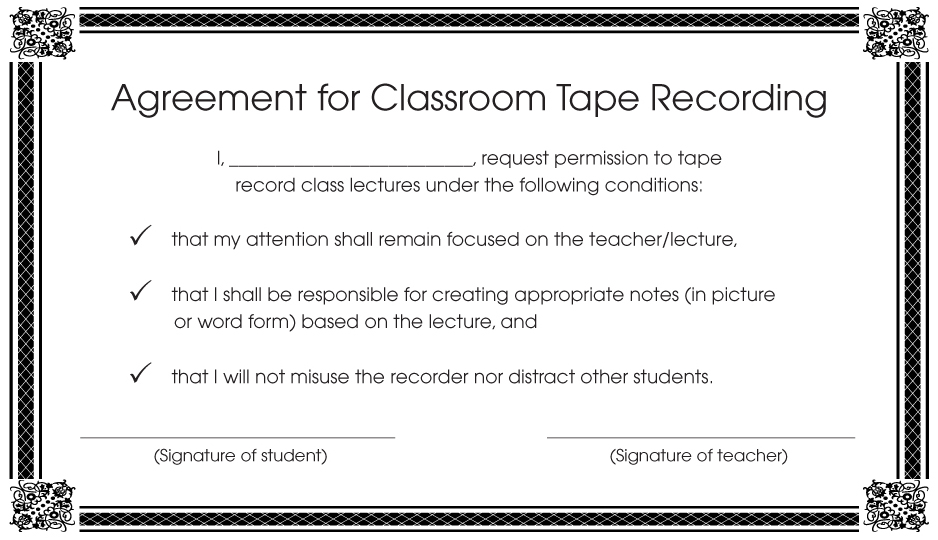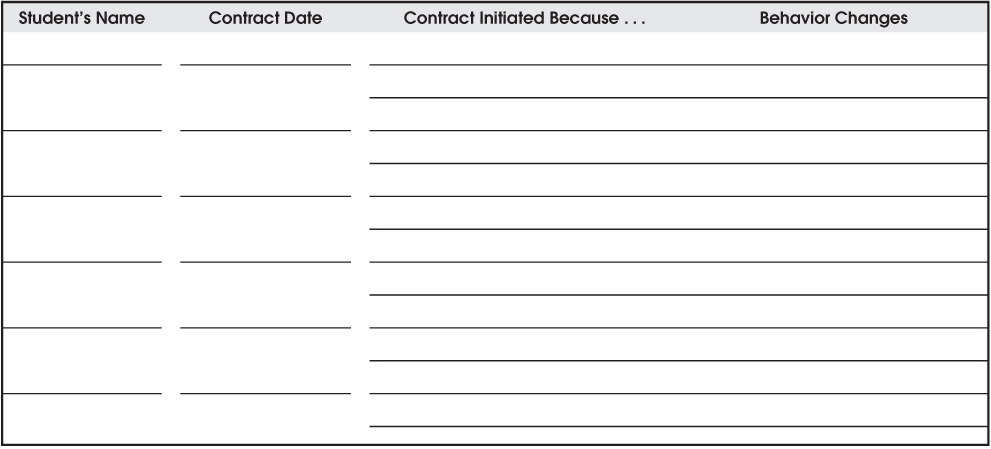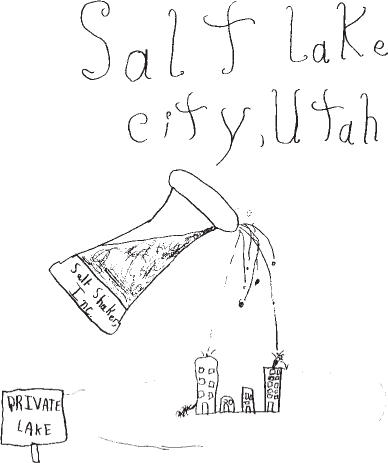Chapter 8
Taking Notes in Pictures
The most obvious way of representing what someone has said is to draw a picture of it. (Ornstein, 1997, p. 36)
I mentioned earlier that visual-spatial students should be allowed to take their notes in pictures. Here’s a story from a student in a fifth-grade World History class that elaborates just why this technique works best for VSLs: One day the class was treated to a guest lecture from a man who had been in World War II. As the gentleman was giving his lecture (an oral presentation only, with no maps, pictures, or other images), he stood over one of the students who had dutifully chosen a seat, front and center. The lecturer noticed that the student was doodling in his notebook. He held the notebook up for the entire class to see and said, “I hope the rest of you are paying more attention than this young man.” The student was, of course, horribly embarrassed.
After class, the visual-spatial doodler approached the guest teacher and explained that his “doodles” were how he took notes. He asked the gentleman to quiz him on any of the material. The guest teacher did, and the student was able to answer each question correctly. The student had drawn the outlines of countries the gentleman had visited; he had drawn weapons the man had used from the descriptions given, and he had engraved them with the years the man had visited there. The doodler remembered all of the new material because he had created pictures of the details, both in his notebook and in his mind. Pictures are permanent. The guest teacher apologized to the class the next day, saying he did not realize that students could effectively take notes in pictures. For visual-spatial learners, who excel in thinking in images, notes and other important information are better recalled when they are converted into pictures. When discussing learning strategies for all types of learners,
The best way to remember something is to change it, to transform the information in some manner. If it’s visual, make it verbal, if it’s verbal create a diagram or picture of it. Use plenty of lists, tables, graphics, and other devices so that you’re not merely sponging up the subject matter intact as it was presented. (Levine, 2002, p. 119)
Your visual-spatial students should be encouraged to use the technique of taking notes in picture form or creating diagrams while they are listening to a lecture or if they need notes on research material from a book, a TV show, or the Internet. Whatever source they are using to learn from, that material can be remembered and more easily recalled by drawing pictures. Drawing will help that material become permanent in their minds because they can later “download” those images whenever they need them.
Picture thinkers must be allowed to call upon their strength of storing and recalling images if we are to truly honor their learning style. When you draw something, you own it. As Williams (1983) noted,
In another study … students recalled vocabulary words better when they read the definitions and drew their own pictures to represent them than when they read and wrote the words and the definitions. Tracing a picture of the definition produced better recall than writing the definition, but creating one’s own visual image was more effective than tracing. (p. 31, emphasis added)
A former student also recalls,
My 9th grade vocabulary teacher … had us learn 500 words in 9 weeks by using index cards. On the front of the index card, we wrote the vocabulary word. On the back of the card, we drew any picture that reminded us of the word. … To this day, more than 20 years later (!) I still remember almost all of those words. (as quoted in Silverman, 2002, p. 277)
If your students find that they can’t draw fast enough while in class, you might consider allowing them to tape record the lecture. That way, they can complete their drawings later, when they can replay the tape and stop it as needed. It must be understood, however that recording for later listening is certainly not an excuse to zone out during class! I’ve included a contract for taping lectures (see Resource 6) that you can use with your students, as well as a tape recording log for your own use (see Resource 7). Some visual-spatial learners remember the teachers’ facial expressions and precisely where they were standing when they discussed certain topics. Watching the teacher sometimes can work better than taking notes, when the student’s head must be down, looking at a notebook. This may be particularly true for students with auditory issues. If a student has slow processing speed or a motor coordination deficit, he has to think about how to make the letters, which distracts him from focusing on the lecture.
RESOURCE 6
Agreement for Classroom Tape Recording

Note. From The Visual-Spatial Classroom: Differentiation Strategies That Engage Every Learner! (p. 73), by A. S. Golon, 2006, Denver, CO: Visual-Spatial Resource. Copyright 2006 by Alexandra Shires Golon. Reprinted with permission.
RESOURCE 7
Tape Recording Log
Use this log to record those students under contract for Classroom Tape Recording and to monitor the effectiveness of this strategy.

Note. From The Visual-Spatial Classroom: Differentiation Strategies That Engage Every Learner! (p. 72), by A. S. Golon, 2006, Denver, CO: Visual-Spatial Resource. Copyright 2006 by Alexandra Shires Golon. Reprinted with permission.
If taking notes in pictures is too time consuming, your students can try a modified version of picture-note taking by combining a mix of drawing and words. Teach your students to use various symbols and abbreviations in their note taking. Table 3 provides some samples to get your students started.
TABLE 3
Abbreviations and Symbols
Word |
Abbreviation/Symbol |
with |
w/ |
between |
b/w |
double |
2x |
triple |
3x |
On the other hand |
OTOH |
By the way |
BTW |
In the first place |
1st pl |
Δ |
change |
< |
less than |
> |
greater than |
@ |
at |
Ʃ |
sum |
Table 3 shows commonly used symbols and abbreviations, but your students also can make up their own. I have used ↑ to mean something was increasing or growing, and ↓ to mean something was being taken away or becoming smaller. The symbol Ω (Omega) is the last letter in the Greek alphabet. It could be used whenever something is ending or if a character dies in a book or play. The capital A is the Greek symbol for Alpha, or the beginning, and could be used to write about the start of something new, a birth, or the introduction of a new character. Students could use “B4” for the word before, or “oppty” for opportunity. Your students can think of numerous abbreviations that are meaningful to them and then start including them in their note taking.
I’ve used the abbreviation VSLs throughout this book to stand for visual-spatial learners. Many people abbreviate TV for television. If your students text message, they already know many acronyms that are used to type secret messages their parents don’t know about (or so they think!). Acronyms also are used to keep the sender from having to type every word. Some of these include PLOS for Parents Looking Over Shoulder and LOL for Laughing Out Loud. Encourage your students to create their own acronyms in their note taking. Depending on the subject in which they are taking notes, there usually are commonly repeated phrases that they could substitute with an acronym.
Taking notes in pictures also works well for information your students have to research or memorize. For example, let’s suppose you are studying the capitals of each state in the U.S. and your students learn that Salt Lake City is the capital of Utah, or that Springfield is the capital of Illinois. Obviously, these are easy ones to create pictures for, but you get the point! Figure 13 shows what one student drew for me. Because he created his own drawing and he used humor, he is more likely to remember this capital than trying to just memorize it. Your students can do the same thing.
Figure 13. Student drawing for aid in memorizing state capitals.

Another trick that works for many visual-spatial students is to create images of the words they are studying by boxing, circling, or underlining them. The simple act of having a particular word stand out from the others, by being enclosed or differentiated somehow, should help to create an image of the word.
Conclusion
Just as there is more than one way for visual-spatial students to master reading, writing, and arithmetic, there is more than the traditional word-only method for them to take notes of new information. Going beyond granting permission for students to draw and actually instructing your VSL students in how to create effective images to use as notes will allow them to call upon their strengths and likely will result in greater success when recalling that information. Like the doodler I wrote of at the beginning of this chapter, creating one’s own images to represent new material can be a more powerful, more meaningful strategy than relying on words alone.


